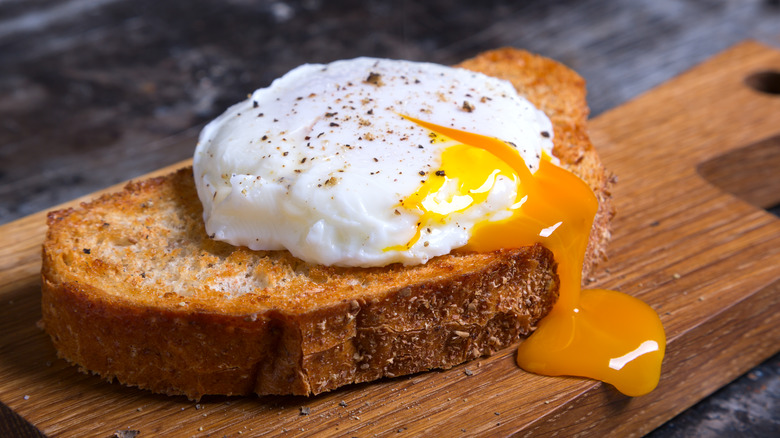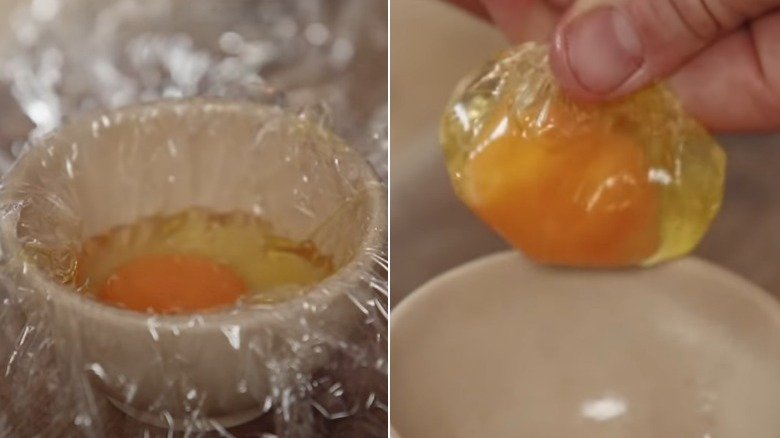Is It Possible To Poach An Egg Using Plastic Wrap?
A poached egg is one that's been simmered, outside its shell, in hot water until it reaches a desired consistency, per Escoffier. Accordingly, virtually anyone who can boil water should be able to poach an egg. The thing is, as beloved a Sunday brunch dish as poached eggs Benedict may be, not everyone will get around to mastering the fine art of coaxing what is essentially a liquid (i.e., egg whites, which Exploratorium says are more than 90% water) into a smooth, translucent pocket containing a perfect golden orb of molten yolk that is at once both oozy and jammy.
Indeed, as Escoffier points out, mastering the art of the perfectly poached egg is regarded as a significant achievement in the culinary world — one that even well-seasoned chefs may struggle with. It means understanding that adding an acid component to the water can keep the whites from spreading the instant they break the water's surface (via Victoria University of Wellington). But dunking the eggs, while still in their shells, in the simmering water, before actually poaching them can help too, per NYT Cooking.
The list of tips and tricks goes on, and you could spend the next year of Sundays trying all of them. Or you could forget all that and try poaching your next egg using plastic wrap. It works like a charm, and it's endorsed by the delightfully fussy celebrity chef, Jamie Oliver. There is one caveat according to science, though, that you'll want to note.
Poaching eggs in plastic wrap is sound kitchen advice, but questioned by scientists
To poach an egg using plastic wrap line a small bowl with a generous square of food-safe plastic wrap a la Jamie Oliver on his YouTube Channel. Crack your egg into the depression, then quickly cinch the top, creating a smooth, round packet for the egg. Knot and drop the packet into simmering water and set your timer. Our perfect poached egg recipe recommends three minutes, although some people prefer a four- or five-minute poach. Remove when done, snip off the knot, and release what Oliver calls an "absolutely cylindrical" egg onto your plate.
But there is, of course, that caveat that we mentioned above. Some scientists caution against allowing plastic wrap — any plastic wrap, to come into contact with food. As University of Massachusetts plastics engineering professor Daniel Schmidt told Cook's Illustrated, there's currently no research suggesting that plastic wraps labeled as food-safe leach harmful chemicals into food; nevertheless, he recommends not making a practice of using any plastic wrap directly on food surfaces.
Dr. Rob Brown, writing on his blog, concurs, suggesting it's maybe too soon to reliably assess the long-term consequences of allowing even food-safe plastic wraps to touch food. But he does offer advice on assessing the relative safety of any plastic wrap. Specifically, for use with food, Brown recommends using only plastic wraps labeled with an industry code of 2, 4, or 5. They're considered safer than those labeled 1, 3, 6, or 7. It's certainly food for thought while choosing your preferred egg-poaching method.

